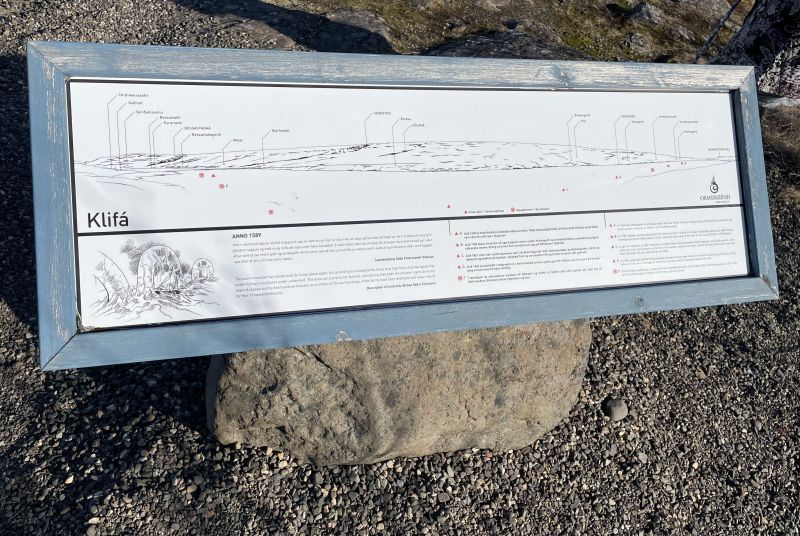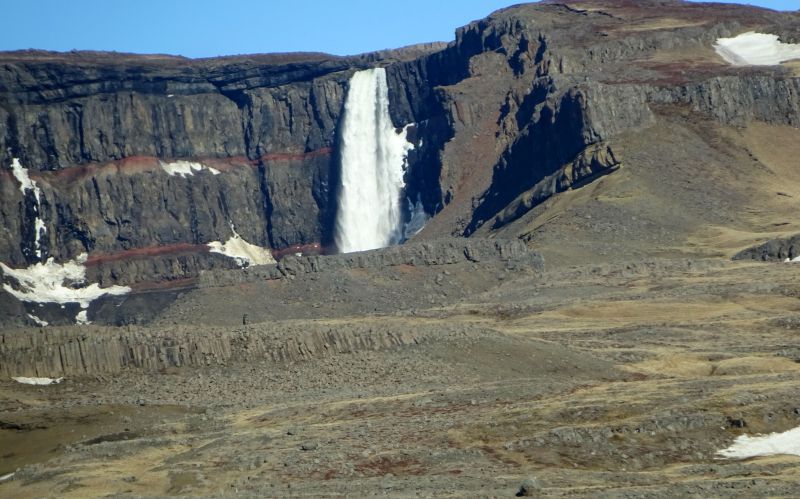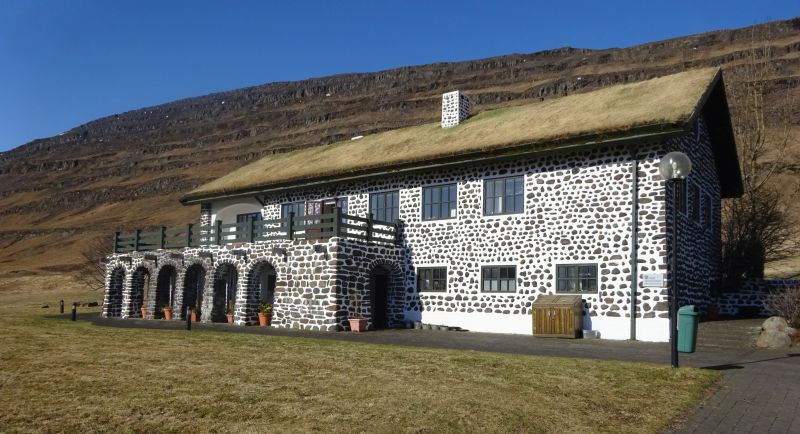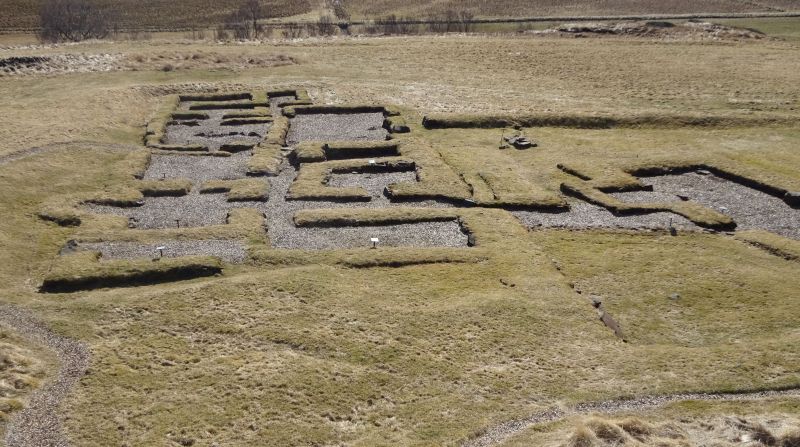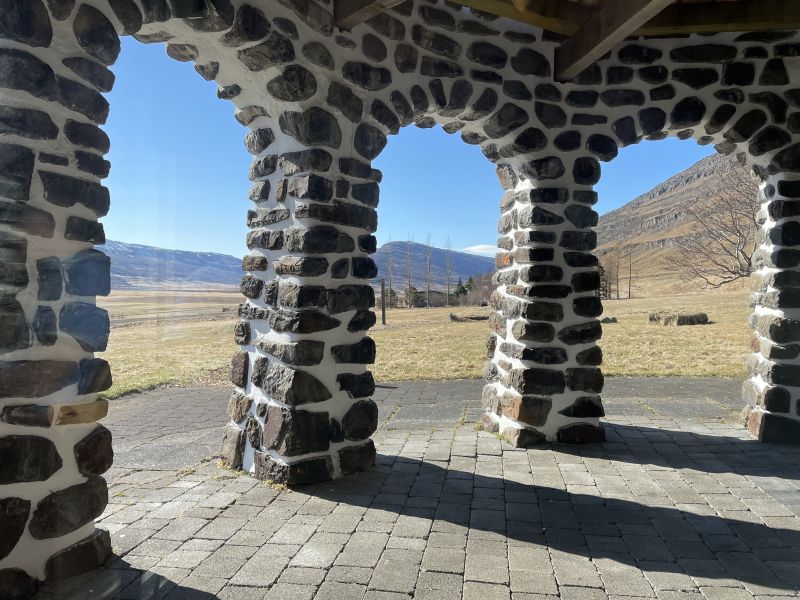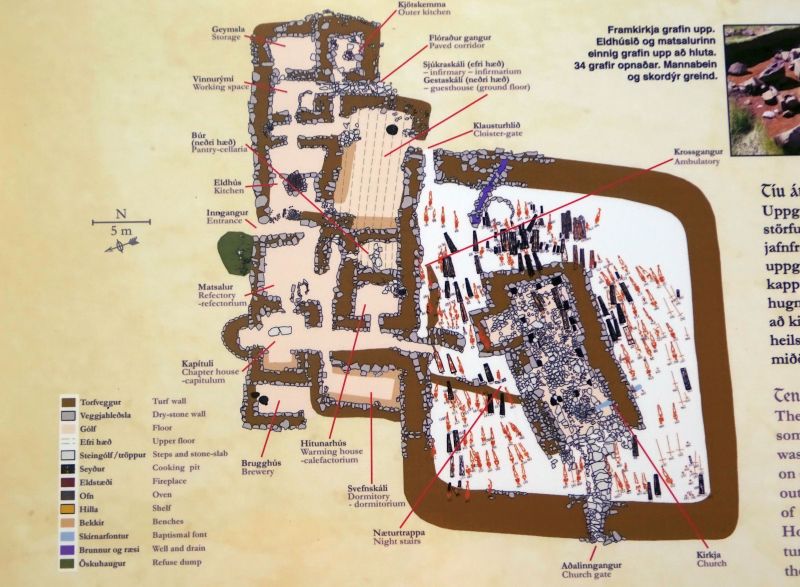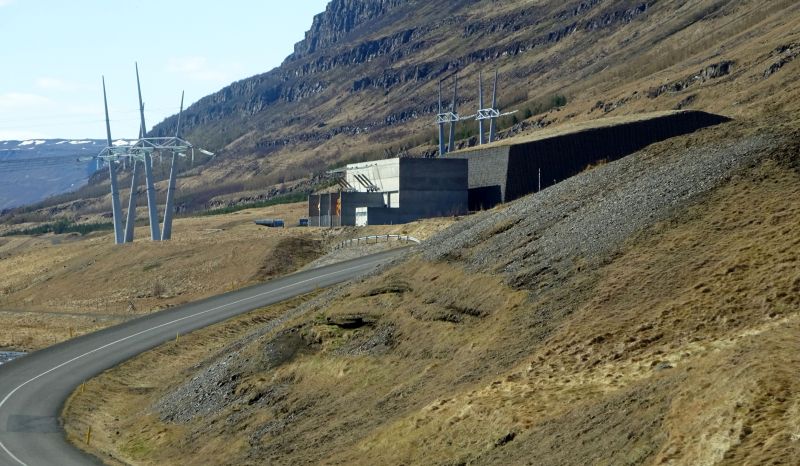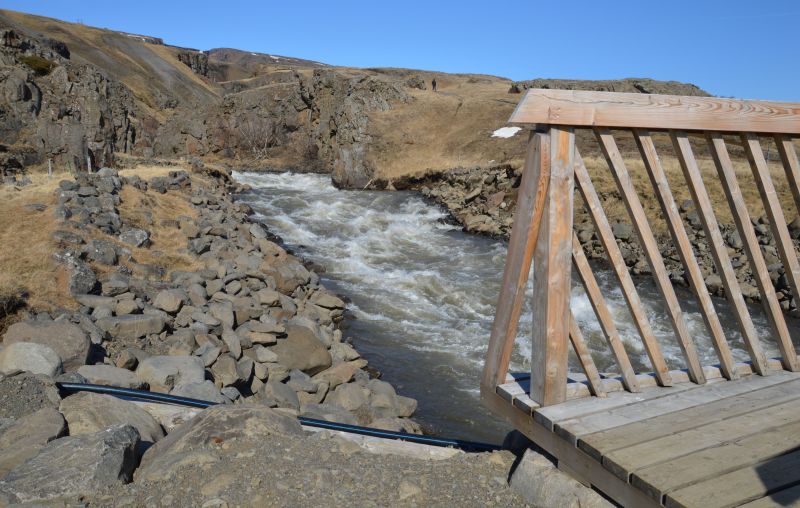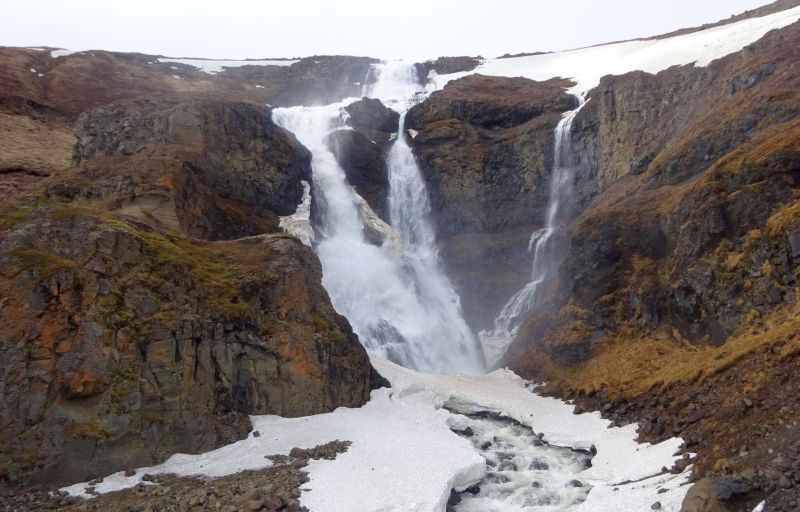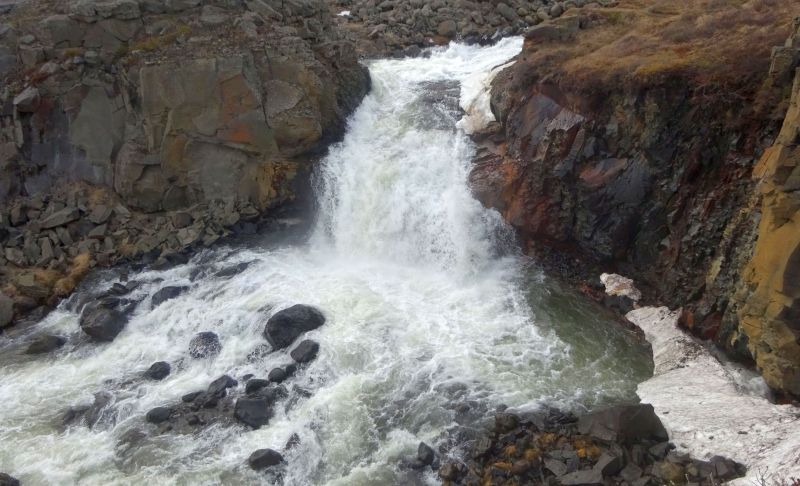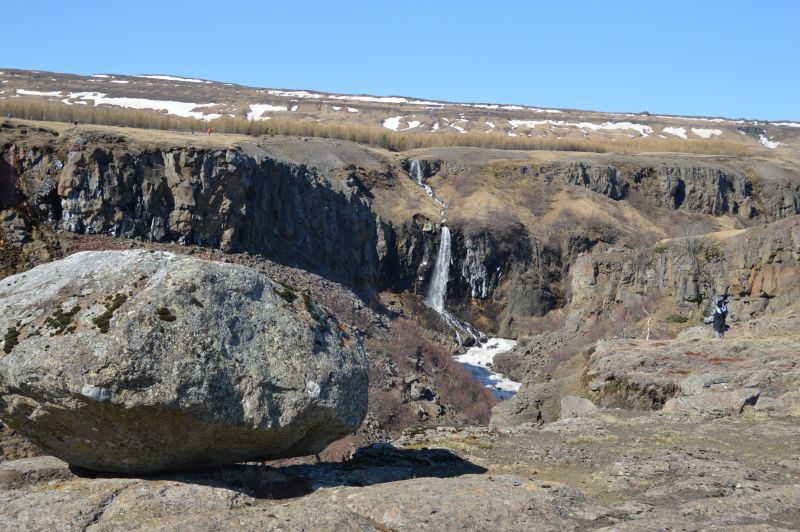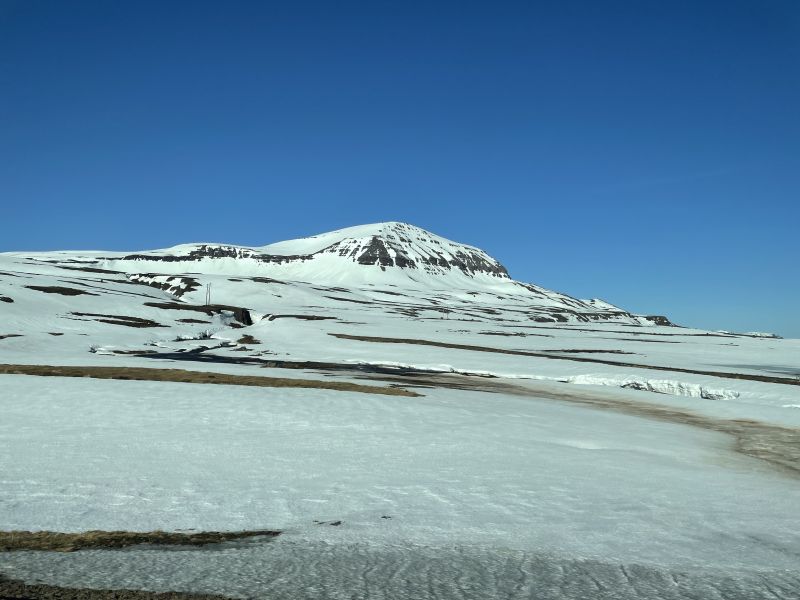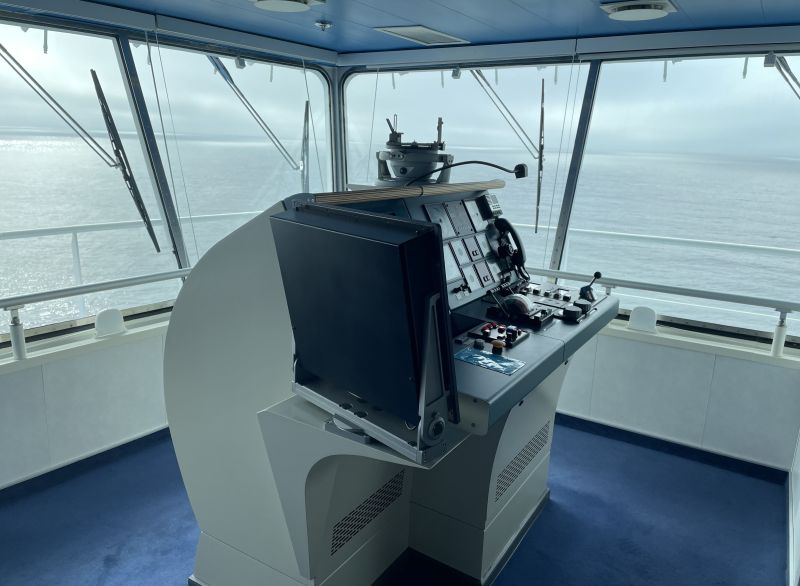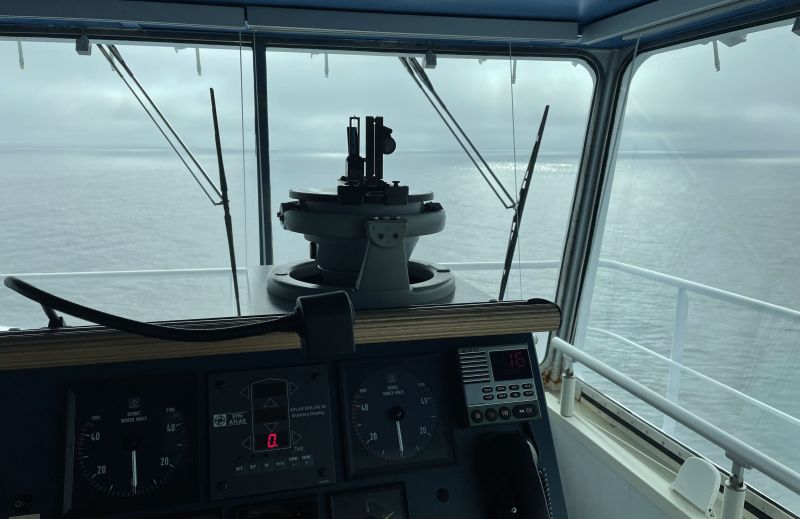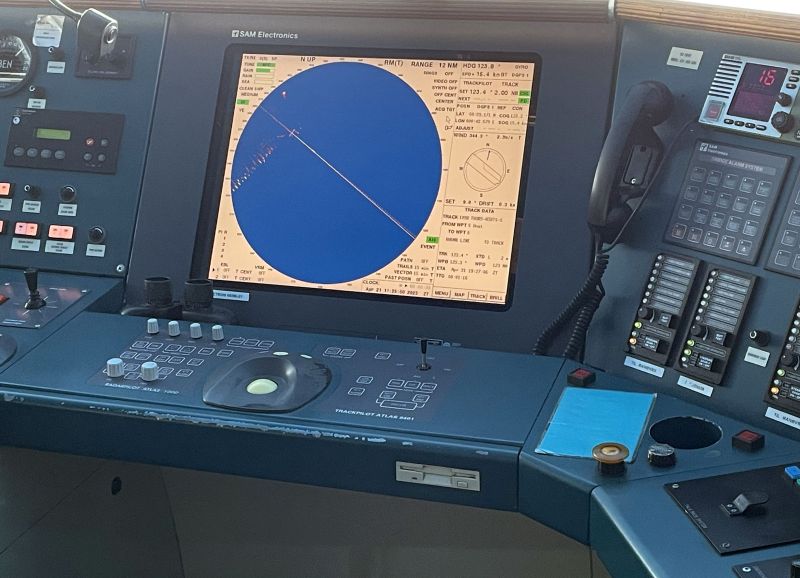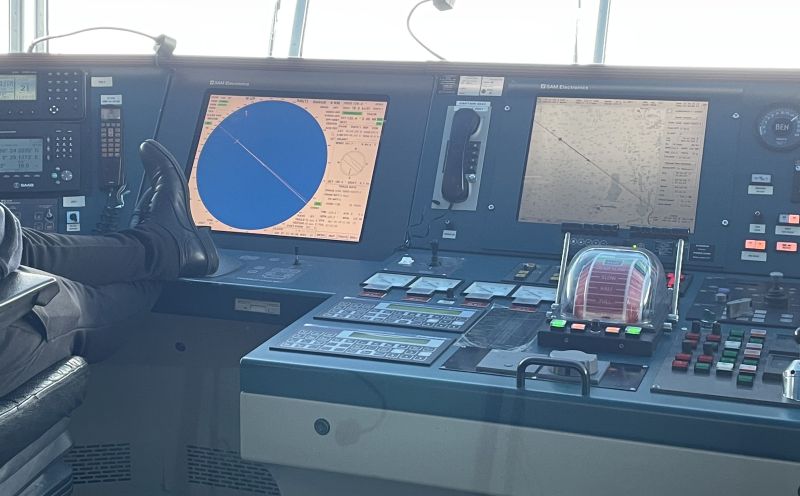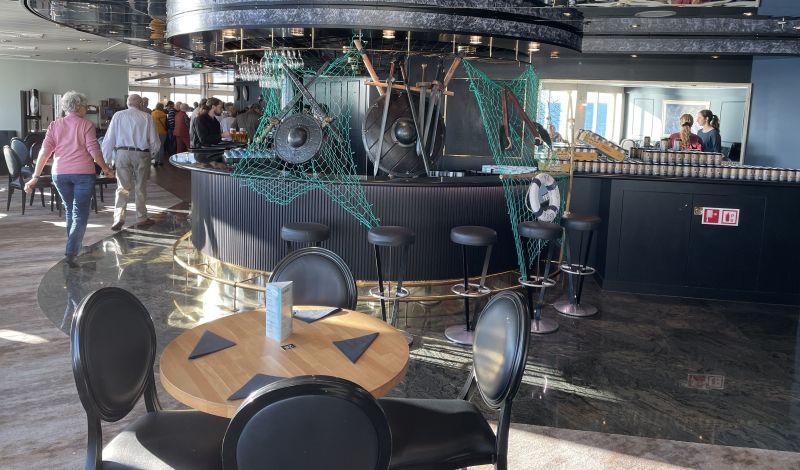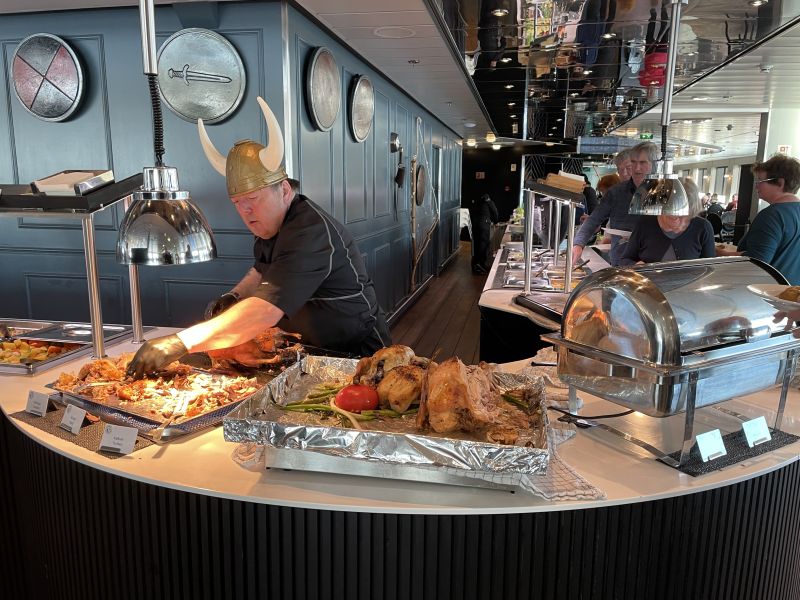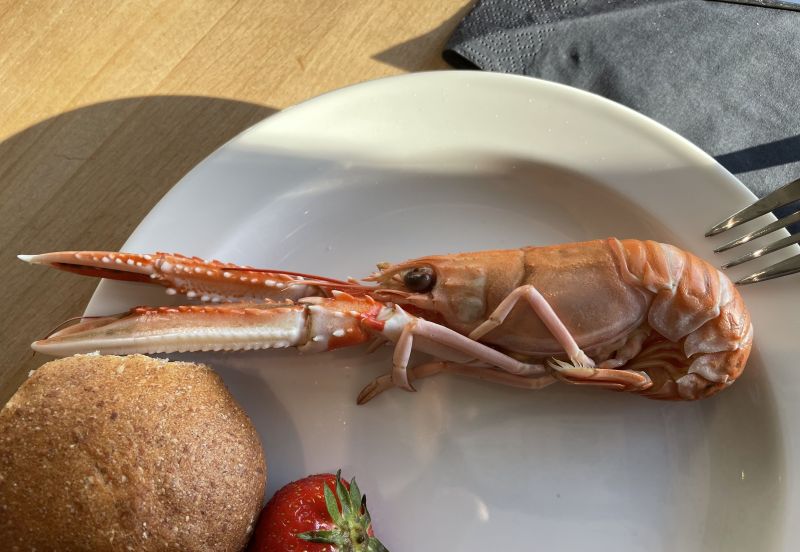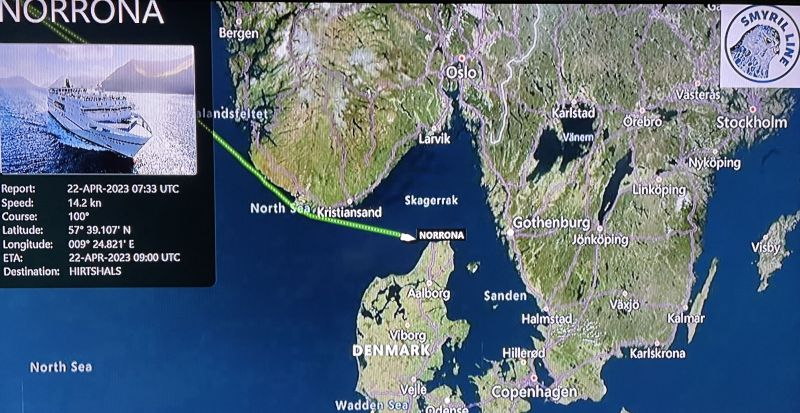The second and so last day on Iceland begins. After yestderday's impressions it is a bit difficult to find the motivation for another early rising. The schedule however is relentless and so I creep to breakfast because a short time later the coach for the next excursion is waiting.
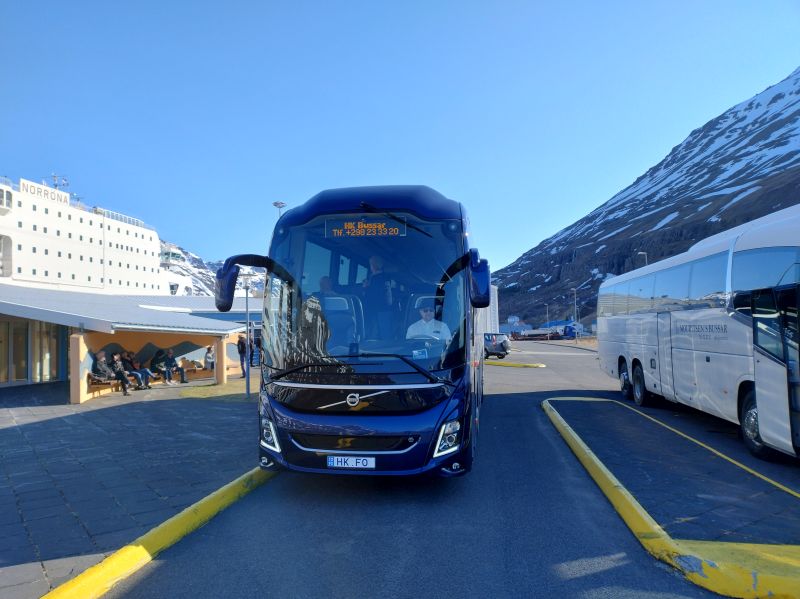
First of all we are once more going to Egilsstaðir and a short stop with the sea monster Klifa. This Lagarfljót dragon (Icelandic: Lagarfljótsormurinn) is an animal said to be living in the Lagarfljót, a lake near the town of Egilsstaðir.
Like Scotland's Nessie the Lagarfljót dragon is described as a kind of sea snake, information about its length varying between 10 and 90 metres. The idea of the Lagarfljót dragon goes back to a legend to be found in Jón Árnason's collection of Iceland's folk myths and legends. Since the year 1345 sighting of the dragon is mentioned in different documents.
Next stop: Gunnar Gunnarson's Hus. We pass the 740 hectare Hallormsstaðaskógur where about 80 different kinds of trees are growing.
Off the tourist routes in the east of Iceland there is a gem of quiet which also has to offer culinary surprises. I'm talking about Skriðuklaustur. This place has its roots in a very old legend reporting a miracle which led to the foundation of a monastery here.
According to the legend of the 15th century, the parson of Valþjófsstaður is on his way to a mortally ill man for the last rites. On the way however he loses his chalice and paten (kind of plate). Searching for the lost objects, he finds them on a small mound near the farmstead of Skriða. The chalice is filled with wine and covered by the paten which holds a bread. In memory to this miracle a chapel was built with an altar at the place where chalice and paten had been found. Later on the monastery of Skriðuklaustur was founded there, existing to the time of Reformation and then it was left and went derelict.
Five centuries later it only was re-discovered and the ruins of the old Augustinian monastery dug out by archaeologists. The result of the large dig are the now uncovered foundation walls with the outlines of the monastery buildings which can be seen from a viewing platform. The dig can be visited, signs giving the necessary information in which room or part of the building you just are.
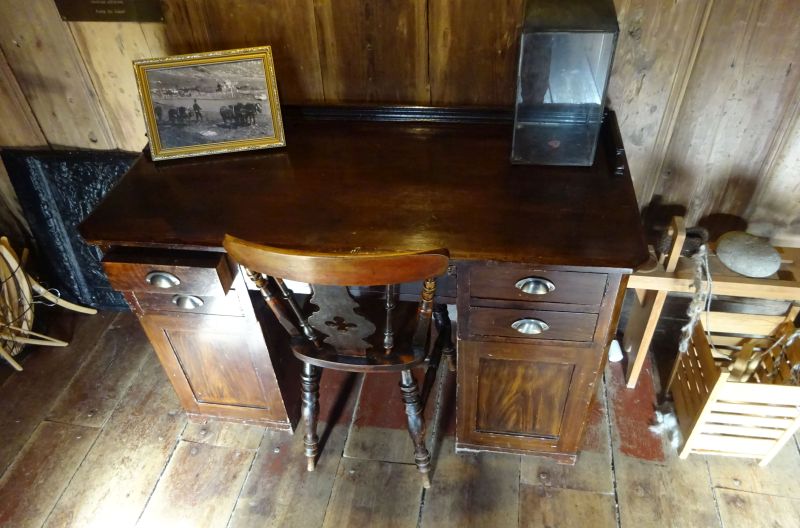
Another find in these premises is the grave of Jón Hrak the Rover. Many legends in Iceland tell about him. It is unusual that against tradition he is buried in north-south direction. The poet Stephan G. Stephansson in a poem wrote the following lines about this which are known to most Icelanders: "In the back of the choir it is cold; there lies Jón Hrak the old. All lie buried from east to west, all, but not Jón Hrak to find his rest.“
Naturally we do not leave out the lunch invitation and then proceed to a Nature Exhibition. All, but not me, skipping it successfully for smoking a quiet cigarette in the grass. On we go, passing a power station and further to the Hengifoss.
Like many waterfalls the Hengifoss was formed during the last Ice Age. At that time in the Fljótsdalur a mighty glacier rolled down to the sea and due to its large mass considerably deepened the valley. The smaller glaciers in the neighbouring valleys could not by far deepen their valleys that much.
When at the end of the Ice Age the glaciers had thawed off, incline steps remained at the mouths of the side valleys to the main valley. By erosion the water streams have worked back the inclines of the side valleys so far that at their mouths narrow gorges developed.
At harder rock formations like the Hengifoss the difference of altitude is overcome by a waterfall.
Unfortunately the last part of the ascent is barred and we have to go back. To the delight of everyone we can go shopping in Egilstadir.
I give me a treat with a coffee from the coffee shop but to tell the truth the coffee I once filtered through toilet paper in Scotland was decidedly better.
A last photo stop near the port and we board again for a 3-course-menu.
After a farewell Viking punch in the Laterna Magica we wave to Iceland as it slowly disappears at the horizon until only the white mountain peaks can be seen.
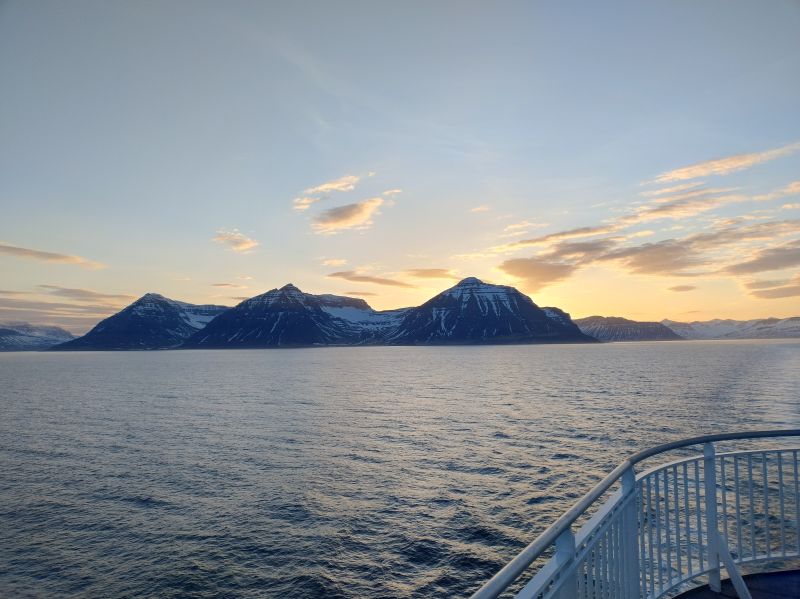
Mist comes up, at 21:30 h withdraw into the cabin, it's very wet and windy outside. We have watched for long how Iceland's mountains melt with the evening sun.
Also the next day we are not spared info-events, followed by a tour to the bridge.
We meet at the Cafeteria, Heðin picks us up and takes us to the bridge.
Compared to the other rooms of the ship, except the dining area, this bridge is immense. We learn that 3 motors at 25-26 knots drive the ship through the Atlantic Ocean.
Via a com system we can hear an emergency call. Off Aberdeen there is a man overboard but that is beyond our reach.
After a while the captain joins us and just looks like Captain Kirk meeting some kind of aliens on his bridge. Which starship captain likes to have Klingons on the bridge after all?
Soon however he is relieved, we go to lunch and take a break. We start packing our luggage and return to deck. The real hardliners sit there with their knitting. I remember that today there is the great Derby in Hamburg, so I get me 4 hours (for about 5 Euro) Internet access and watch the football game.
Towards evening a Viking-menu is scheduled and true shieldmaiden take in everything the galley has to offer, just yummy and looking splendid. There's lots of fish even if brutally decimated by the cheap group in our backs. Some peculiar fishes are still looking at us and there is any amount of cake rich with cream.
For a last time on the Norrøna we stuff ourselves.
Next morning we pack the rest of our things and leave the cabin at 9.00 h with some nostalgic feeling to wait at the gangway. Mooring at 10.00 h, 30 minutes later we are back in the bus. The driver recognizes us at once and takes us to the hotel. We get into our car and one last time get a look at the Narröna lying far off in the harbour. The we leave Hirthals and proceed to Aarhus.
At a short break we meet a fellow passenger who also thought the tour just splendid. Then he gets into his car for his long way to Lörrach deep in Southern Germany.
Early in the evening we are back home. We shall come again - or we wave over from the Lofoten.
